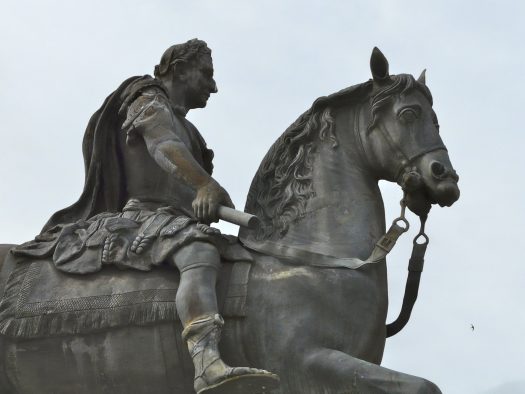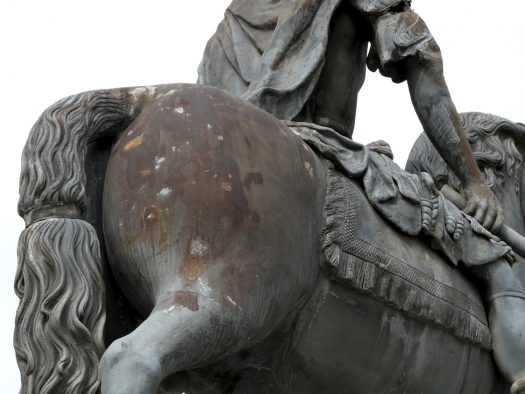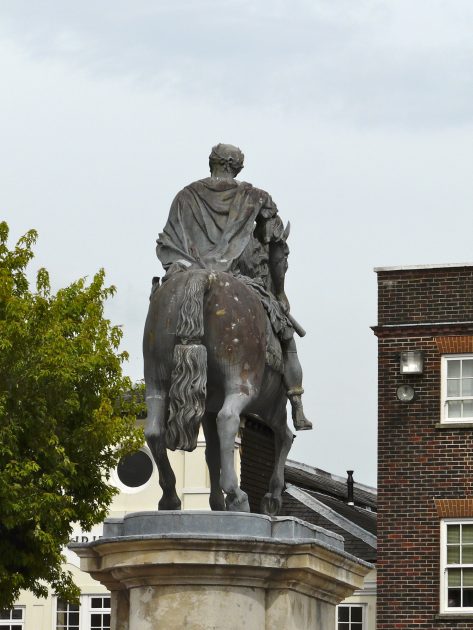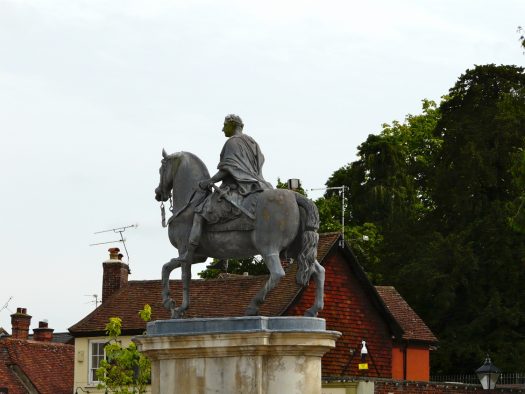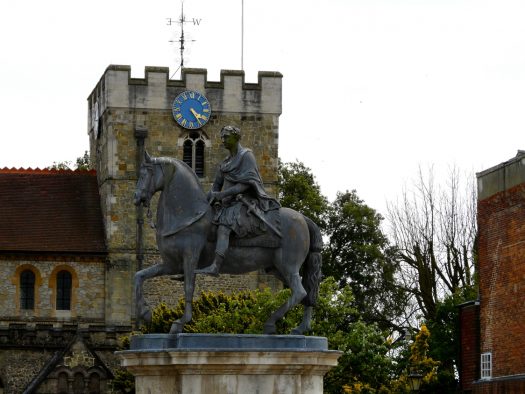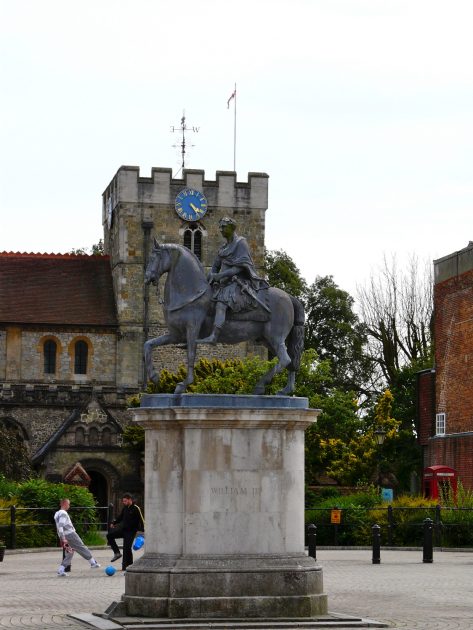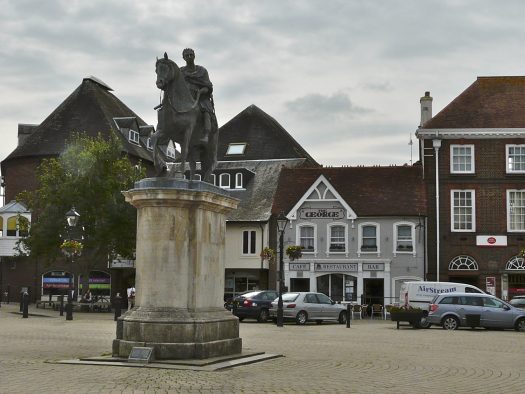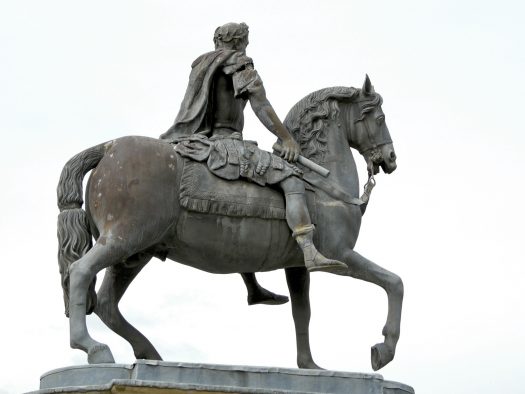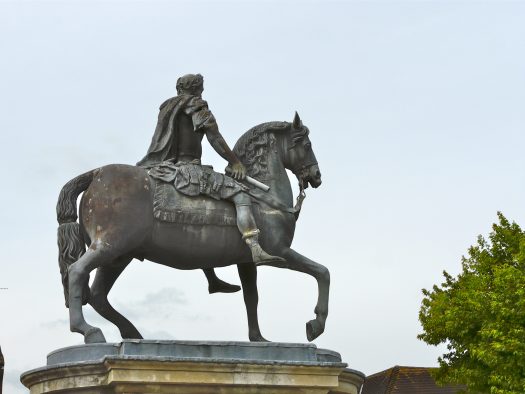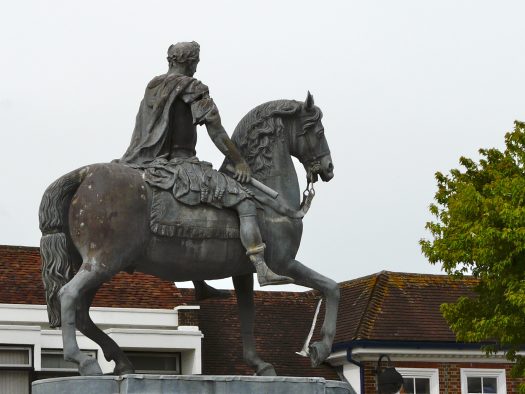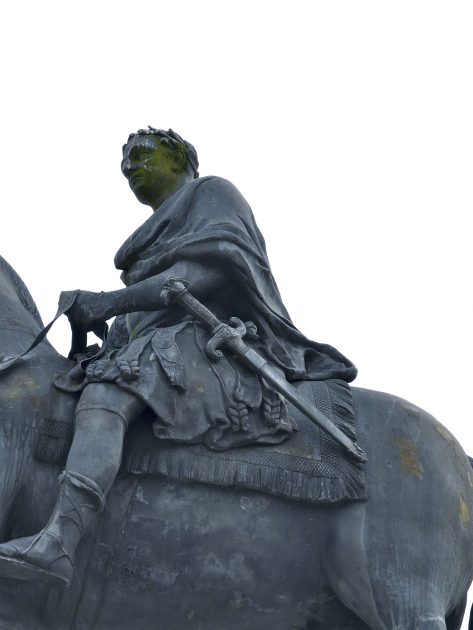- CountryUK
- Town:Petersfield
-
Year of creation:1757
- Rider(s):William III
(1650 –1702), also widely known as William of Orange, was Prince of Orange from birth, Stadtholder of Holland, Zeeland, Utrecht, Guelders and Overijssel in the Dutch Republic from the 1670s and King of England, Ireland and Scotland from 1689 until his death. Popular histories usually refer to his joint reign with his wife, Queen Mary II, as that of William and Mary. As King of Scotland, he is known as William II. He is sometimes informally known as “King Billy” in Northern Ireland and Scotland, where his victory at the Battle of the Boyne in 1690 is still commemorated by Unionists and Ulster loyalists.
William was the only child of William II, Prince of Orange, who died a week before his birth, and Mary, Princess of Orange, the daughter of King Charles I of England. In 1677, during the reign of his uncle King Charles II of England, he married his cousin Mary, the fifteen-year-old daughter of Charles II’s brother James. A Protestant, William participated in several wars against the powerful Catholic King Louis XIV of France, in coalition with Protestant and Catholic powers in Europe. Many Protestants heralded him as a champion of their faith. In 1685, his Catholic uncle and father-in-law, James, became King of England, Scotland and Ireland. James’s reign was unpopular with the Protestant majority in Britain, who feared a revival of Catholicism. Supported by a group of influential British political and religious leaders, William invaded England in what became known as the Glorious Revolution. In 1688, he landed at the south-western English port of Brixham. Shortly afterwards, James was deposed.
William’s reputation as a staunch Protestant enabled him and his wife to take power. During the early years of his reign, he was occupied abroad with the Nine Years’ War (1688–97). Queen Mary II died in 1694. In 1696, the Jacobites plotted unsuccessfully to assassinate William and return his father-in-law to the throne. William’s lack of children threatened the Protestant succession. The danger was averted by placing distant relatives, the Protestant Hanoverians, in line. Upon his death in 1702, the king was succeeded in Britain by Anne and as titular Prince of Orange by his cousin, John William Friso.
- Sculptor(s):Cheere, Henry or John
John Cheere (1709 – 1787) was an English sculptor. He worked for some years in partnership with his older brother, Henry Cheere. He took over the sculptor’s yard of Jon van Nost in 1737, along with his and Andrew Carpenter’s moulds for making lead figures.
Henry Cheere (1703 – 1781) worked together not only with his younger brother John, but also from 1727 until 1733 with the Flemish sculptor Henry Scheemakers
-
It is said that John Cheere made an equestrian statue of William III in 1739 for St. James’ Square in London, but because of a lack of funds this statue was never placed there. It could be that the statue in Petersfield turns out to be the one originally produced for St James’s Square in London. This statue was purchased with a bequest of 500 pounds from William Jollife in 1750.
The sculptor is said to be John Cheere or…… was this statue in Petersfield created by his older brother Henry.
The, originally gilded statue previously stood in Petersfield House and was removed to its present position in 1812. The statue was bought by the town in 1911 and restored by public subscription in 1913. When I saw the statue in 2011, it urgently needed another restoration.
